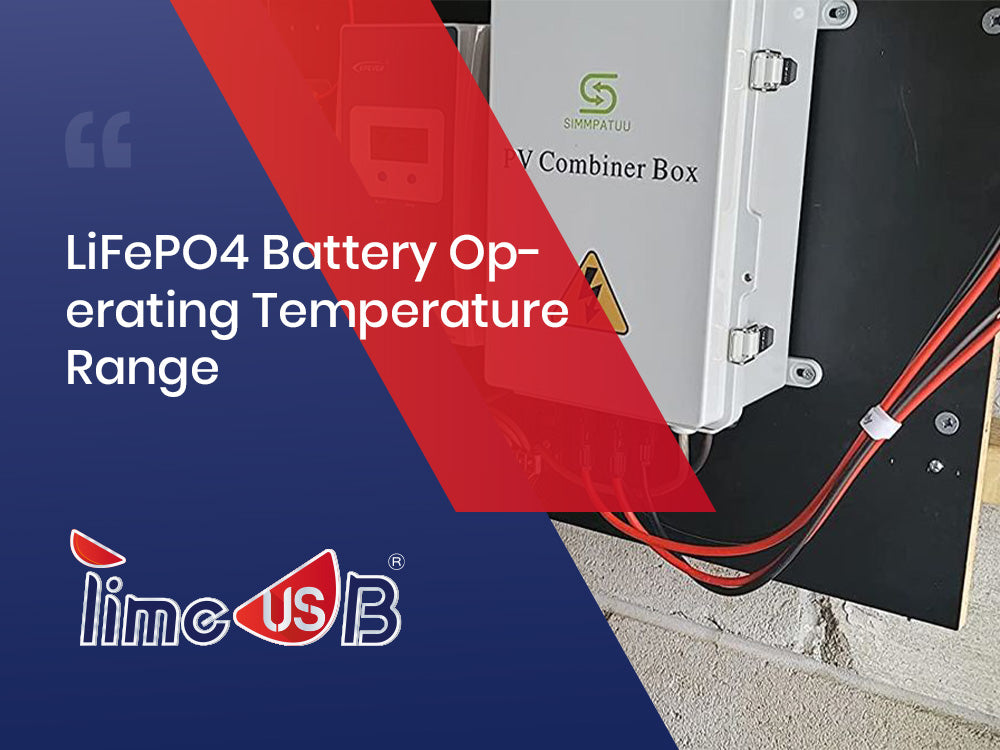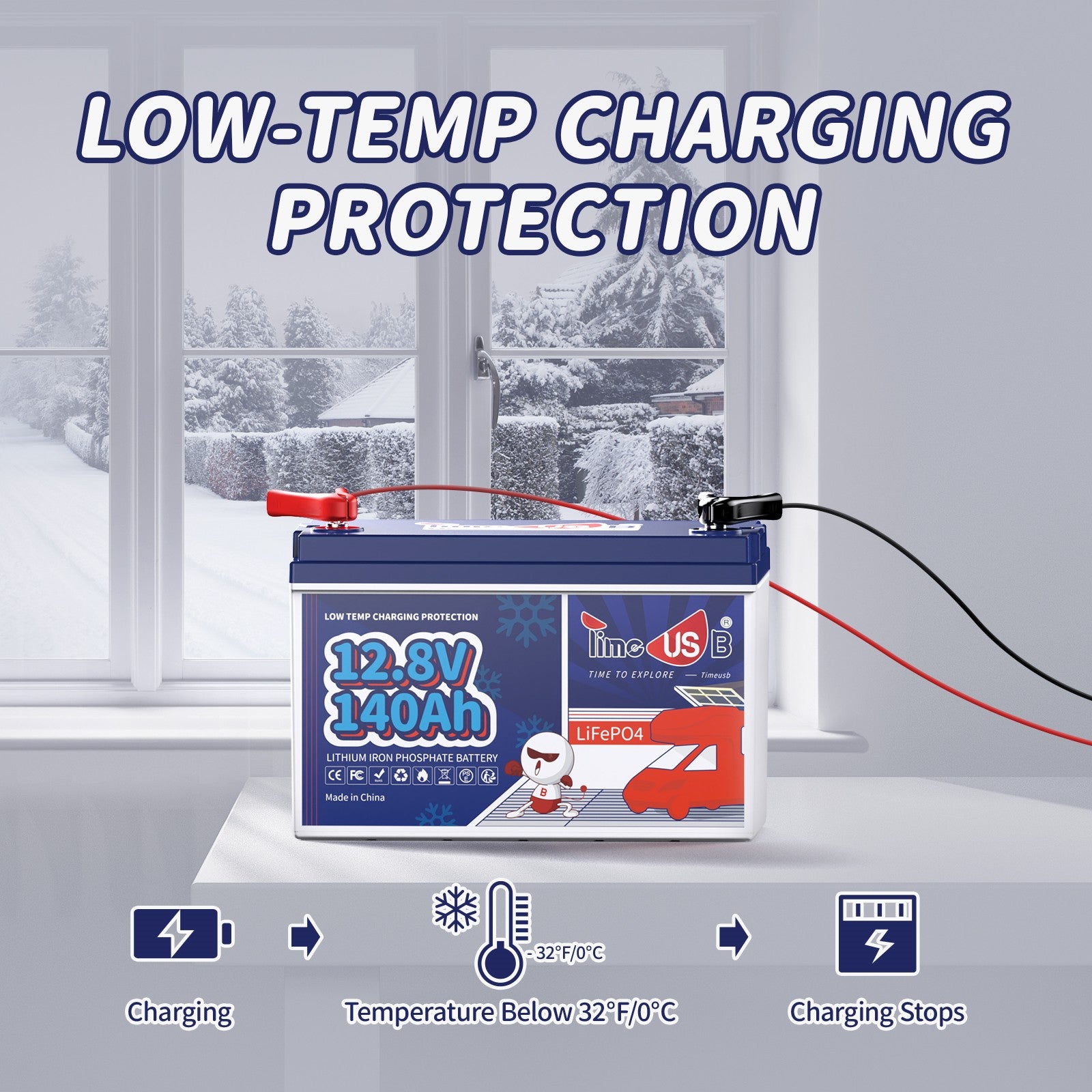LiFePO4 Battery Operating Temperature Range

When it comes to maximizing the lifespan and efficiency of batteries, operating temperature plays a pivotal role. Among the various types of batteries, Lithium Iron Phosphate (LiFePO4) batteries have gained popularity due to their safety, longevity, and eco-friendliness. However, to fully harness these advantages, understanding the LiFePO4 battery operating temperature range is crucial. In this article, we'll explore the optimal temperature conditions for LiFePO4 batteries and how they influence performance and durability.
What is a LiFePO4 Battery?
Before delving into the operating temperature range, it’s important to define what a LiFePO4 battery is. LiFePO4 batteries are a type of lithium-ion battery that uses lithium iron phosphate as the cathode material. They are renowned for their thermal stability, high current rating, and long cycle life. In addition, they are less prone to thermal runaway compared to other lithium-ion batteries, making them a safer option for a wide array of applications.
The Significance of Operating Temperature in Battery Performance
Temperature affects nearly every aspect of a battery's operation, from its ability to hold a charge to its overall lifespan. Both high and low temperatures can have adverse effects. Cold temperatures can increase the internal resistance and decrease the capacity, while high temperatures can accelerate chemical reactions, leading to a reduced lifespan and potential safety concerns.
The Ideal LiFePO4 Battery Operating Temperature Range
LiFePO4 batteries are designed to operate effectively within a specific temperature range. Typically, this range falls between -20°C and 60°C (-4°F to 140°F). Within this range, the batteries can perform optimally, providing a consistent power output and maintaining a healthy cycle life.
Recommend operating temperature range:
|
Charge: 0℃ to 50℃ / 32℉ to 122℉ |
|
Discharge: -20℃ to 60℃ / -4℉ to 140℉ |
|
Storage: -10℃ to 50℃ / 14℉ to 122℉ |
The Effects of Cold Temperatures
LiFePO4 batteries, like any battery technology, are affected by the ambient temperatures in which they operate. Cold temperatures, in particular, can significantly impact the performance and health of these batteries, making it essential to understand and mitigate such effects. Below, we delve into how cold environments influence LiFePO4 batteries.
Increased Internal Resistance
This is a major factor affected by low temperatures. As temperatures drop, the internal resistance of the battery increases. This happens because the electrochemical processes within the battery slow down, requiring more effort (voltage) to push the same amount of current through the battery. Such resistance can lead to less efficient energy delivery and result in the battery feeling 'weaker'.
Decreased Capacity
LiFePO4 batteries will show a decrease in capacity in cold conditions. This implies that the energy storage capability of the battery diminishes, which means you cannot get the same amount of energy from the battery as you would at room temperature. This is temporary, and the capacity often returns to normal once the temperature rises.
Slower Charging Rates
Charging a LiFePO4 battery in cold conditions is generally slower and less efficient due to the increased internal resistance and slower chemical reactions. When the temperature drops below a certain level (usually around 0°C or 32°F), most manufacturers recommend reducing the charging current or even waiting until the batteries warm up to avoid potential damage.
Risk of Lithium Plating
Charging a LiFePO4 battery at temperatures below freezing can lead to lithium plating on the anode. This occurs when lithium ions do not fully intercalate into the anode material and instead form metallic lithium on the anode surface. Lithium plating can cause permanent damage, reducing the overall battery capacity and posing a potential safety risk.
Permanent Capacity Loss
While LiFePO4 batteries are less prone to damage from cold temperatures compared to other lithium-ion chemistries, continuous exposure to extreme cold can still lead to a reduction in the total lifespan of the battery. Repeated charging under very cold conditions may lead to irreversible capacity loss over time.
Battery with Low Temperature Charging Protection
Charging batteries in low temperature could cause the permenant damage to them, that's why Timeusb release the battery with low-temperature charging protection function.
Timeusb 12V 140Ah LiFePO4 lithium battery features the low-temperature charging protection function. Low Temp cut off function will automatically cut the battery off from charging when the cell temperature is lower than 32℉.

The Consequences of High Temperatures
High temperatures can significantly impact the performance and lifetime of LiFePO4 (Lithium Iron Phosphate) batteries, just as cold temperatures can. While LiFePO4 batteries are noted for their thermal stability compared to other lithium-ion batteries, they are not immune to the negative effects of high-temperature exposure. Here's how elevated temperatures can affect LiFePO4 batteries:
Reduced Cycle Life
The cycle life of a battery — the number of charge-discharge cycles it can undergo before its capacity diminishes significantly — is adversely affected by high temperatures. High heat accelerates the aging process of the battery's internal components, leading to a faster decline in capacity over time.
Increased Self-Discharge
Batteries naturally lose charge over time when not in use due to self-discharge, but high temperatures can increase the rate of self-discharge. This means that a LiFePO4 battery kept at high temperatures will drain faster, even when it's not powering anything.
Potential for Thermal Runaway
Although LiFePO4 batteries have a much higher thermal runaway threshold than other lithium-ion batteries, they are not immune to thermal runaway, especially if they are poorly manufactured, damaged, or exposed to very high temperatures. Thermal runaway is a condition where the battery generates more heat than it can dissipate, leading to a rapid rise in temperature and potentially resulting in a fire or explosion.
Structural Damage and Degradation
High temperatures can deteriorate the battery's materials and components, potentially causing a loss of mechanical integrity. The separators within the battery can degrade, electrodes can be damaged, and the electrolyte can break down, each of which can negatively affect performance and safety.
Electrolyte Evaporation and Leakage
Excessive heat can lead to the evaporation of the electrolyte solution within a LiFePO4 battery. This can reduce the effectiveness of ionic transport within the cell, leading to reduced performance and capacity. In the worst-case scenario, seals may fail, and the electrolyte may leak out, which is a serious safety concern.
Decreased Charge Acceptance
At high temperatures, a LiFePO4 battery might experience a decrease in its ability to accept a charge due to increased internal resistance. This can make charging less efficient and slower, and as temperatures approach the upper limits of the battery's design, it may even necessitate stopping the charging process to prevent damage.
Maximizing Battery Life Within the Operating Temperature Range
To ensure your LiFePO4 battery operates effectively:
Use Battery Management Systems (BMS)
A good BMS closely monitors and regulates the temperature of the battery, ensuring it stays within the safe operating range. All of Timeusb's LiFePO4 lithium batteries are built in BMS to protect the battery, ensuring the safety of using the battery.
Proper Insulation
During cold weather, insulating your battery can help maintain a consistent operating temperature.
Thermal Management
Implement cooling systems or heat sinks to dissipate excess heat in high-temperature environments.
Avoid Extreme Conditions
Whenever possible, avoid using or storing your batteries in environments that are outside the recommended temperature range.
Follow Manufacturer Guidelines
Manufacturers provide specific instructions for temperature management—adhering to these will extend the life of your battery.
Conclusion
LiFePO4 batteries perform well under various conditions, but it is crucial to manage and maintain them within the manufacturer's specified temperature ranges. While high temperatures may sometimes be inevitable, the key to ensuring longevity and performance is to take active steps to manage the battery's thermal environment and avoid exposing the batteries to excessive heat whenever possible.



![[Full Guide] The Comprehensive Guide to LiFePO4 Battery Life](http://www.timeusbpower.com/cdn/shop/articles/The_Comprehensive_Guide_to_LiFePO4_Battery_Life_757d2749-9468-4739-ac83-0960c27749b0.jpg?v=1722918256&width=1080)
